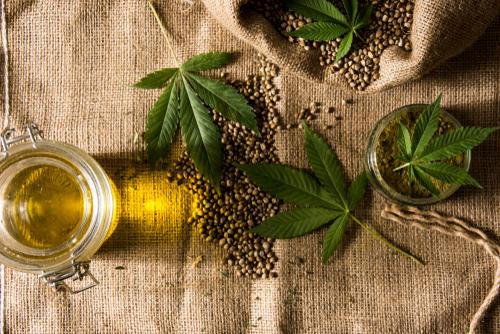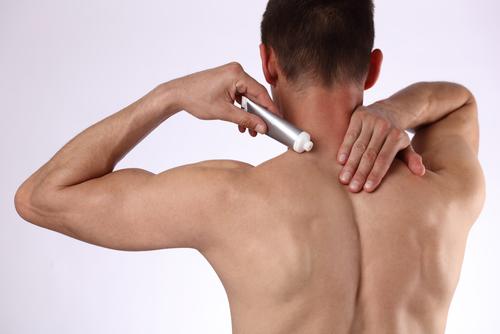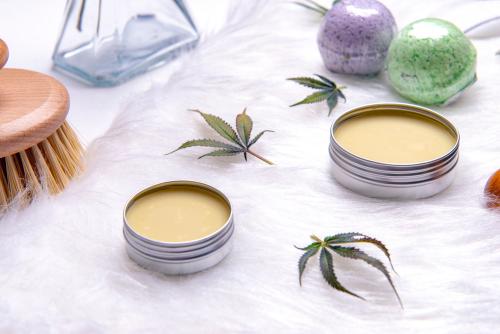All about CBD: How you can Use it for Recovery and Injury Relief
The buzz about CBD, which stands for Cannabidiol, is real. CBD has become more widely available as of late, and the product has many uses.
For example, CBD can be applied topically to provide pain relief to sore muscles, can be consumed orally when added into smoothies and coffee, and is even present in beauty products like lip balms and facial serums. However, CBD has also become a powerful addition to some people’s wellness arsenal due to its ability to relieve sore muscles and body pain following exercise.
What is CBD?
CBD is a chemical compound that is a naturally-occurring part of the hemp plant (Felton, 2019). The hemp plant is one of the earliest plants to be cultivated, dating back to ancient times. In addition, hemp is one of the fastest-growing plants and is used for multiple purposes. Hemp is an ingredient in clothing, paper, paint, animal food and insulation, to name a few.
Hemp is legal to grow and distribute in the United States. However, some people may associate the hemp plant and CBD with marijuana, also known as cannabis. Although CBD the second most prevalent of the active ingredients in cannabis, it does not cause users to get “high” as they do when smoking or utilizing marijuana products (Grinspoon, 2018). CBD is not associated with addiction or dependence, so it is generally safe to use. In addition, CBD can be consumed in a variety of ways, such as topically and orally.
What is the Difference between CBD and Marijuana?
Marijuana comes from the cannabis plant, and CBD is a part of the hemp plant. Hemp and cannabis are similar plants, but are not the same (Grinspoon, 2018). The most notable difference between hemp and cannabis is that cannabis contains a compound called tetrahydrocannabinol, or THC.
THC and CBD both interact with the body’s endocannabinoid system. Endocannabinoids are neurotransmitters involved in common physiological aspects of the human body, like the processes responsible for feeling pain and hunger, as well as our moods and memory.
THC is the psychoactive compound responsible for the “high,” or euphoric feeling some users may feel when using marijuana products (Holland, 2019). A psychoactive compound is anything that affects the mind and body. By contrast, CBD does not interact with the brain receptors responsible for making you feel high, and as a result does not make users feel high (Akpan & Leventhal, 2019). That does not mean CBD can’t be beneficial for a wide variety of issues, such as anxiety, chronic pain, and soothing inflammation, which I will discuss in more detail later in the article.
Is CBD Legal and Safe?
Marijuana is not currently legal in all of North America, but what about CBD’s legality? Each state has its own restrictions concerning CBD. For example, most states allow CBD products, usually for medicinal purposes. The states that have legalized medical marijuana include CBD in that legality. Some states even have laws specific to CBD, which allow for CBD products that contain only small amounts of THC.
As the legal landscape surrounding CBD (and marijuana more broadly) changes, so will the laws, as the industry has a lot of potential and many areas in which to grow. To keep up to date with the changing laws, consult the websites of marijuana non-profit and advocacy groups such as the National Organization for the Reform of Marijuana Laws (NORML) or the Marijuana Policy Project (MPP).
How can CBD be used? Is it Effective?
CBD has been tested and found effective among patients with epilepsy, schizophrenia, and Alzheimer’s disease. It has also been discussed as an alternative that can be used to prevent opioid deaths.
“A variety of clinical diagnoses can be treated with CBD, including seizure disorders, chronic pain, arthritis, and some anxiety and depression. We are beginning to see research starting at UC San Diego on CBD use in autism as well,” said Sherry Yafai, MD, a physician specializing in emergency medicine and cannabis medicine, as well as founder of the Releaf Institute.
For patients with epilepsy, CBD’s neuroprotective and anti-inflammatory properties can be effective. Cannabis has been used to treat epilepsy starting as early as the 19th century (Devinsky et al., 2014). When it comes to CBD, it has been found to be more effective in reducing seizures in patients with Dravet syndrome when compared to a placebo (Perucca, 2017). However, more research is needed since studies on CBD are hard to do and are subject to regulatory, legal, financial and time constraints (Epilepsy Foundation, 2019).
In 2006, researchers in the U.K. conducted the first controlled trial to evaluate how a cannabis-based medicine can help patients with Rheumatoid Arthritis (RA). Thirty one patients were given the medicine and 27 were given a placebo, or a sugar pill with no active ingredient. After five weeks of treatment, the researchers found that the participants receiving the medicine felt greater pain relief and decreased RA symptoms (Blake, Robson, Ho, Jubb, & McCabe, 2005). CBD is useful in alleviating joint pain and inflammation, and patients with multiple sclerosis and cancer have also benefited from using the product (Russo, 2008).
CBD has been used with patients who have Alzheimer’s disease, though that area of research is still developing, too. In animal studies, CBD has been shown to reverse cognitive deficits in mice (Cheng, Spiro, Jenner, Garner, & Karl, 2014).
Finally, prior research in patients with schizophrenia, CBD treatments also show promise. In a study from 2012, researchers conducted a randomized trial in which they had some patients with schizophrenia take CBD at 600-800 mg per day over the course of four weeks, while some took a standard anti-psychotic medicine called amisulpride (Leweke et al., 2012). They found that CBD is as effective as the prescription anti-psychotic medication, amisulpride, in treating psychotic symptoms amongst patients with schizophrenia. Patients using CBD as their treatment reported less adverse effects like weight gain. Although CBD shows promise in limited randomized clinical trials (considered the “gold standard” design when it comes to clinical research), researchers caution against heralding CBD as a miracle treatment, though, because of issues like dosing, treatment resistance and more (Pierre, 2019).
People with anxiety can also find some relief by using CBD.
“CBD has been shown in animal and some preliminary human studies to reduce anxiety. We often have people tell us how effective our Balance tincture has been for reducing their anxiety. I personally love to take it right before public speaking. I get a noticeable calm effect. The more I experience less anxiety though using CBD, the less I tend to have anxious feelings,” said Desi McKinnon, co-Founder of Cordial Organics.
How CBD can Aid your Wellness Routine
So, why should you incorporate CBD into your wellness routine? For avid exercisers or those living with chronic pain who are hoping to get some relief, CBD can help with that, too. Users wanting to harness CBD’s power to aid in pain management should focus on two things, especially if they are novice users: product type and dosing.
CBD is available in quite a few forms, such as tinctures, balms, transdermal patches, and roll-on sticks. CBD products consumed orally will metabolize in the body quicker than other application methods, such as topical application (Garza, 2019). Applying CBD in the form of a balm, oil, patch, or in the bath (such as a bath bomb or bath soak) can target the pain directly but the pain relief will happen more gradually since it has to pass through the skin. The effects, however, can be more long lasting than oral consumption. For people trying to get some pain relief or reduce inflammation, they should choose topical methods to target the sore muscles directly.
“I would consider starting with a CBD rub on any area that is sore or for muscle aches after a workout. For older individuals, consider using CBD topically for low back pain or arthritic joints. This is a very easy way to start, especially for those who are scared or hesitant about ‘getting high,’ as people generally do not ‘feel’ topical CBD,” said Yafai. “For those who want to start with a sublingual oil, I would suggest starting when experiencing some aches or pain. Remember it can take up to 1-2 hours for an oil that is taken sublingual or ingested to take effect. This is an easy way to see if you are responsive to CBD. If you have a diagnosis such as epilepsy or are taking multiple medications for pain, please discuss with a doctor before stopping any medications abruptly.”
In addition to paying attention to the method in which the CBD is delivered, users should also look at the product packaging to understand the other active ingredients and to ensure they are receiving a high-quality product. For example, CBD is sometimes combined with CBN to help users fall sleep easily and sleep more soundly.
Users with food allergies or sensitivities should also take a careful look at the back of the bottle or the package insert to verify that there are no additives or extra ingredients to which they could be allergic or sensitive.
When it comes to dosing, it is best to start small and work your way up, especially when consuming products orally that also contain THC. If you are someone who has never used these types of products before or uses them infrequently, it is even more crucial to start with a small amount.
“CBD can often be a stepping stone to whole plant or ratio plant therapy with THC. CBD can also be taken in a variety of ways, such as in topical, oral/sublingual, or inhaled format. Depending on the route of administration, CBD can be more or less effective for the individual. Dosage also changes how effective the medication can be for a patient. More does not always mean better,” Yafai cautioned.
The product label or package insert should provide useful information regarding the dosing – or if you purchase your products in-person at a dispensary, the employees should be able to advise on how to use the products and what dosing would suit your needs.
CBD for Skin Care
When used topically, CBD can help reduce inflammation of the skin, so it could be beneficial in helping mitigate redness caused by rosacea or other inflammatory skin diseases. In one study, researchers applied CBD to human skin cells and found a reduction of skin cells seen in patients with psoriasis, another inflammatory skin disease (Wilkinson & Williamson, 2007).
One thing to be mindful of is the other ingredients within the product, and of the quality of the product. Though research on humans is still ongoing, most dermatologists agree that using CBD oil is pretty safe. If you experience a breakout or adverse reaction to the CBD product, it is unlikely that the CBD caused that reaction – it could have been an added fragrance, dye or other additive, which is why examining the ingredient label is so important (Jacoby, 2019).
Major beauty retailers like Sephora, Ulta, Kiehl’s, Josie Maran and Herbivore have all released a CBD or hemp-related skin product, so the market is definitely expanding rapidly. I recommend purchasing products from a reputable retailer and from one that has a generous return policy in case the product causes any problems for you.
Side Effects of CBD
Although CBD is generally considered to be quite safe, using CBD can be associated with a few side effects, such as nausea, fatigue, and irritability (Grinspoon, 2018).
When consumed orally, the combination of CBD and THC can cause the same psychoactive effects as marijuana, since THC is the compound that causes the “high.” These effects are not permanent and will last a few hours at most, depending on the dose consumed. For these reasons, it is best to use small amounts and increase over time as needed.
When used topically, CBD can cause skin irritation. If this happens to you, discontinue use of the product and seek medical attention if the issue persists.
One important thing to note is that we don’t yet have enough robust research on how CBD can interact with other drugs, such as prescription and over the counter drugs, and herbal supplements (Thompson, 2018). If you are taking medications, it is important to consult your healthcare provider prior to starting a regimen involving CBD.
Where to Get CBD
CBD is available for purchase online and at dispensaries around the nation. To purchase CBD products online, look for reputable retailers and read about their process and how they ensure quality control. In addition, the company should also include educational web content or materials about how to determine the right dosage, how their products should be used, and a Frequently Asked Questions (FAQ) section. When in doubt, do a little research on the company’s reputation. Although CBD products are also available from larger online retailers like Amazon and eBay, but I don’t advise purchasing CBD from these sources since it is hard to know about the quality and sourcing of these products.
If you’d like to visit a dispensary in person, you will need to be prepared to show ID before entering and complete a quick sign-in process. The employees in dispensaries are typically quite knowledgeable on the wide array of products available in the store and can make recommendations based on your needs. Some also offer discounts on certain products on specific days of the week, so don’t forget to ask about any promotions or first-time customer offers.
Conclusion
Adding CBD to your wellness routine can be beneficial for people who are looking to get some relief from inflammation, sore muscles or relieve pain following injury or exercise. CBD can also be applied topically to achieve these same results, or consumed orally. In addition, CBD has been popping up in various skincare products and can also aid in reducing redness and inflammation. Overall, it is important to note that research on CBD and its uses in various therapeutic areas is still developing, but the market shows no signs of slowing down.
By Nicki Karimipour, PhD

Dr. Karimipour has previous experience in writing and editing for both print and online publications, and in teaching journalism, health writing, and public relations at the undergraduate and graduate level.
Her research-related experience ranges from collaborating with medical researchers and consulting on clinical trials, to clinical research program management. Her own research focuses on a variety of health topics, such as effects of social media use on female body image, football and concussions, and e-cigarette use among youth. Her research has been published in the Journal of Clinical and Translational Research, the Journal of Behavioral Health Services & Research, and the Journal of Sports Media.
She is based in Los Angeles, California and currently works at the University of Southern California in clinical trial operations. Follow her on Twitter: @NickiKPhD
References
Akpan, N., & Leventhal, J. (2019). Is CBD legal? Here’s what you need to know, according to science. Retrieved from https://www.pbs.org/newshour/science/is-cbd-legal-heres-what-you-need-to-know-according-to-science
Blake, D.R., Robson, P., Ho, M., Jubb, R.W., & McCabe, C.S. (2006). Preliminary assessment of the efficacy, tolerability and safety of a cannabis-based medicine (Sativex) in the treatment of pain caused by rheumatoid arthritis. Rheumatology, 45(1), 50-52. Retrieved from https://www.ncbi.nlm.nih.gov/pubmed/16282192
Devinsky, O., et al. (2014). Cannabidiol: Pharmacology and potential therapeutic role in epilepsy and other neuropsychiatric disorders. Epilepsia, 55(6). Retrieved from https://onlinelibrary.wiley.com/doi/full/10.1111/epi.12631
Epilepsy Foundation (2019). Medical marijuana and epilepsy. Retrieved from https://www.epilepsy.com/learn/treating-seizures-and-epilepsy/other-treatment-approaches/medical-marijuana-and-epilepsy
Garza, E. (2019). How to use CBD oil for pain from a sports injury. Retrieved from https://www.papaandbarkleyessentials.com/blog/how-to-use-cbd-oil-for-pain-related-to-sports-injuries
Grinspoon, P. (2018). Cannabidiol (CBD) — what we know and what we don’t. Retrieved from https://www.health.harvard.edu/blog/cannabidiol-cbd-what-we-know-and-what-we-dont-2018082414476
Jacoby, S. (2019). Is there literally any reason for CBD to be in your skin-care products? Retrieved from https://www.self.com/story/cbd-skin-care
Leweke, F.M., et al. (2012). Cannabidiol enhances anandamide signaling and alleviates psychotic symptoms of schizophrenia. Translational Psychiatry, 94. Retrieved from https://www.nature.com/articles/tp201215
Perucca, E., (2017). Cannabinoids in the Treatment of Epilepsy: Hard Evidence at Last? Journal of Epilepsy Research, 7(2), 61-76. Retrieved from https://www.ncbi.nlm.nih.gov/pmc/articles/PMC5767492/
Pierre, J.M. (2019). Cannabidiol (CBD) for schizophrenia: Promise or pipe dream? Current Psychiatry, 18(5), 12-16, 19-20. Retrieved from https://www.mdedge.com/psychiatry/article/199443/schizophrenia-other-psychotic-disorders/cannabidiol-cbd-schizophrenia
Russo, E.B. (2008). Cannabinoids in the management of difficult to treat pain. Therapeutics and Clinical Risk Management, 4(1), 245-259. Retrieved from https://www.ncbi.nlm.nih.gov/pmc/articles/PMC2503660/
Thompson, D. (2018). CBD oil: All the rage, but is it safe & effective? Retrieved from https://www.webmd.com/pain-management/news/20180507/cbd-oil-all-the-rage-but-is-it-safe-effective#1
Wilkinson, J.D., & Williamson, E.M. (2007). Cannabinoids inhibit human keratinocyte proliferation through a non-CB1/CB2 mechanism and have a potential therapeutic value in the treatment of psoriasis. Journal of Dermatological Science, 45(2), 87-92. Retrieved from https://www.sciencedirect.com/science/article/pii/S092318110600315X






 Compact/Folding
Compact/Folding Front Drive
Front Drive Rear Drive
Rear Drive